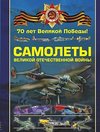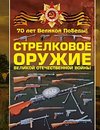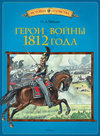
Hellenistic armies
Source: Wikipedia. Pages: 49. Chapters: Ancient Macedonian army, Hellenistic military personnel, Military units and formations of the Hellenistic world, Macedonian phalanx, Aelianus Tacticus, Cataphract, Phalanx formation, Army of Macedon, Seleucid army,... Viac o knihe
Produkt je dočasne nedostupný
15.75 €
bežná cena: 17.90 €
O knihe
Source: Wikipedia. Pages: 49. Chapters: Ancient Macedonian army, Hellenistic military personnel, Military units and formations of the Hellenistic world, Macedonian phalanx, Aelianus Tacticus, Cataphract, Phalanx formation, Army of Macedon, Seleucid army, Antigonid Macedonian army, Demetrius of Pharos, Peltast, Companion cavalry, Flying wedge, Polyaenus, Pezhetairoi, Ptolemaic army, Ancient Macedonian battle tactics, Argyraspides, Hypaspists, Thureophoroi, Psiloi, Military Decree of Amphipolis, Thorakites, Rhombus formation, Agema, Somatophylakes, Carpaea, Prodromoi, Xanthika, Leukaspides, Pantodapoi, Chalkaspides, Gymnitai, Sarissophoroi, Asthetairoi, Asthippoi. Excerpt: A cataphract was a form of armored heavy cavalry utilised in ancient warfare by a number of peoples in Western Eurasia and the Eurasian Steppe. The word in English is derived from the Greek: Kataphraktos (plural: ¿at¿f¿a¿t¿¿ Kataphraktoi), literally meaning "armored" or "completely enclosed". Historically the cataphract was a very heavily armored horseman, with both the rider and steed draped from head-to-toe in scale armor, while typically wielding a kontos or lance as their weapon. ".. But no sooner had the first light of day appeared, than the glittering coats of mail, girt with bands of steel, and the gleaming cuirasses, seen from afar, showed that the king's forces were at hand." Ammianus Marcellinus, late Roman historian and soldier, describing the sight of Persian cataphracts approaching Roman infantry in Asia Minor, c. 4th century. Cataphracts served as either the elite cavalry or assault force for most empires and nations that fielded them, primarily used for impetuous charges to break through infantry formations. Chronicled by many historians from the earliest days of Antiquity up until the High Middle Ages, they are in part or wholly believed to have given rise to the Age of Feudalism in Europe and the later European equivalents of Knights and Paladins, via contact with the Byzantine Empire. Notable peoples and states deploying cataphracts at some point in their history include: the Scythians, Assyrians, Sarmatians, Parthian dynasties, Achaemenid Empire, Sakas, Armenia, Seleucids, Pergamenes, the Sassanid Empire, the Roman Empire and the Byzantine Empire. In the West, the fashion for heavily armored Roman cavalry seems to have been a response to the Eastern campaigns of the Parthians and Sassanids in the region referred to as Asia Minor, as well as numerous defeats at the hands of cataphracts across the steppes of Eurasia, the most notable of which is the Battle of Carrhae. Traditionally Roman Cavalry was neither heavily armored nor all that effective; th
- Vydavateľstvo: Books LLC, Reference Series
- Formát: Paperback
- Jazyk:
- ISBN: 9781156728963


 Anglický jazyk
Anglický jazyk 



 Ruský jazyk
Ruský jazyk 





